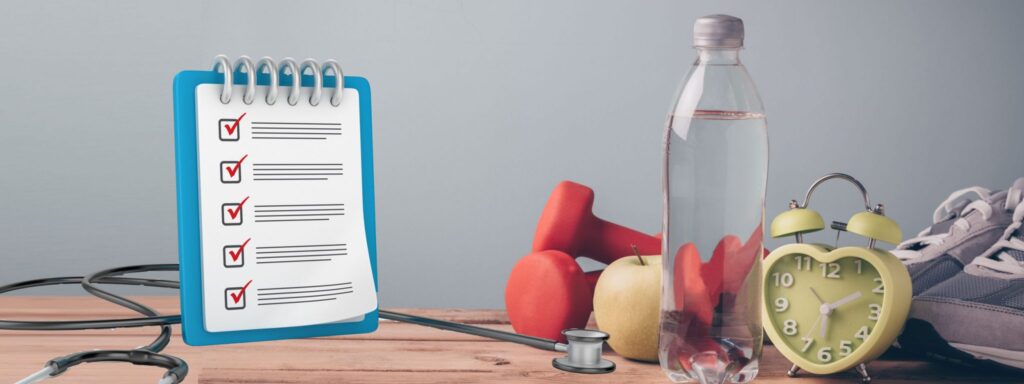
Chronic pain is something millions of people deal with every day, and it can really affect the quality of life. Whether it’s from arthritis, nerve damage, fibromyalgia, or something else, living with persistent pain can make even the simplest tasks feel overwhelming. But don’t worry — there’s hope! You don’t have to just accept pain as part of your life. There are plenty of ways to manage chronic pain, improve your daily comfort, and reclaim your life. In this guide, we’ll walk you through effective tips and tricks to manage chronic pain so you can feel better and live life to the fullest.
1. Understand Your Pain: Know What You’re Dealing With
The first step in managing chronic pain is understanding where it’s coming from. Chronic pain can be caused by various conditions like:

- Arthritis: Joint pain, swelling, and stiffness.
- Nerve Pain: Conditions like diabetes or multiple sclerosis can cause nerve damage and persistent pain.
- Fibromyalgia: A condition that causes widespread muscle pain and fatigue.
- Back Pain: Often the result of muscle strain, spinal issues, or disc problems.
Getting to the root cause is essential. Seeing a doctor and getting a proper diagnosis will help you build a pain management plan that’s right for you.
2. Create a Pain Management Plan That’s Right for You
Once you know what’s causing your pain, you can develop a treatment plan with your doctor. A good plan might include a mix of things like:

- Medications: For some, over-the-counter pain relievers or stronger prescriptions might be necessary.
- Physical Therapy: Exercises to strengthen muscles, improve flexibility, and reduce pain.
- Occupational Therapy: Helps you find easier ways to do everyday tasks with less pain.
Working with your doctor will help you find the perfect combination of treatments that work for your specific pain.
3. Get Moving: Exercise Your Way to Less Pain
It might sound strange, but exercise can actually help reduce chronic pain! Here’s how:

- Reduces Inflammation: Regular movement can help reduce inflammation, especially for conditions like arthritis.
- Boosts Endorphins: Exercise releases endorphins — the body’s natural painkillers.
- Improves Flexibility: Staying active keeps you mobile and strengthens muscles, which reduces pain in the long run.
Low-impact exercises, like swimming, walking, or cycling, are great choices for easing pain. Yoga and gentle stretching also work wonders for improving flexibility and relieving tension.
4. Mind-Body Techniques: Calming Your Mind to Ease Your Pain
Pain doesn’t just affect the body — it impacts your mind, too. That’s why mental health is so important when managing chronic pain. Mind-body techniques can help you relax, reduce stress, and make pain more manageable:

- Meditation & Deep Breathing: These practices help calm your mind and manage stress, which can ease pain.
- Cognitive Behavioral Therapy (CBT): CBT can help you change the way you think about your pain and teach you coping strategies.
- Acupuncture: This ancient Chinese practice uses tiny needles to help alleviate pain for some people.
Using these techniques regularly can help you manage both the emotional and physical sides of chronic pain.
5. Heat and Cold Therapy: Simple Relief at Home
When it comes to managing pain, sometimes the simplest solutions are the best. Heat and cold therapy are easy ways to relieve pain:

- Heat Therapy: Heat can relax stiff muscles and increase blood flow. A heating pad or warm bath works wonders for easing tension and pain.
- Cold Therapy: Ice packs can help reduce swelling and numb sharp pain. It’s especially useful for conditions like arthritis flare-ups.
Try alternating between heat and cold, depending on the type of pain you’re feeling. And always make sure to use a cloth or barrier between your skin and the hot/cold pack to avoid burns or frostbite.
6. Prioritize Sleep: Rest to Heal
Chronic pain can make sleeping difficult, but sleep is essential for healing and managing pain. Here’s how to make sure you’re getting quality rest:

- Stick to a Sleep Schedule: Go to bed and wake up at the same time each day to keep your sleep cycle regular.
- Create a Relaxing Bedtime Routine: Avoid caffeine or electronics before bed. Try reading, listening to soothing music, or doing light stretches to unwind.
- Optimize Your Sleep Environment: Make sure your bed and bedroom are as comfortable as possible. Invest in a good mattress and pillows to reduce pressure points.
If you still have trouble sleeping, talk to your doctor. There are solutions that can help you rest better even with chronic pain.
7. Explore Alternative Therapies: Get Creative with Your Pain Relief
In addition to traditional treatments, some alternative therapies may help you manage pain more effectively:

- Massage Therapy: Regular massages can help reduce muscle tension and improve circulation, providing pain relief.
- Chiropractic Care: If you have back or neck pain, spinal adjustments from a chiropractor might provide relief.
- Herbal Supplements: Some herbs, like turmeric and ginger, are believed to reduce inflammation. Always talk to your doctor before trying new supplements.
These therapies can be a great complement to your regular pain management routine, offering additional relief.
8. Connect with a Support System: You’re Not Alone
Living with chronic pain can feel isolating, but you don’t have to go through it alone. Stay connected with supportive friends, family, or support groups:

- Talk About Your Pain: Sharing your experiences can help reduce feelings of isolation and provide emotional relief.
- Join Online Communities: There are many online support groups where you can talk to others who understand what you’re going through.
Having a strong support system is crucial to both your mental and physical well-being.
9. Eat for Pain Relief: Fuel Your Body Right
What you eat can have a big impact on your pain levels. Certain foods can reduce inflammation, while others may make it worse:

- Anti-Inflammatory Foods: Incorporate foods like fatty fish (salmon, mackerel), berries, leafy greens, and nuts into your diet.
- Limit Inflammatory Foods: Cut back on processed foods, red meat, and sugary snacks.
A healthy, balanced diet can reduce inflammation and help manage pain more effectively.
10. Know When to Seek Help: Don’t Suffer in Silence
If your pain becomes too much to manage or interferes with your daily life, it’s time to reach out to a healthcare professional. A pain management specialist can offer advanced treatments like nerve blocks or spinal injections that might be more effective in managing your pain.
Conclusion:
Chronic pain doesn’t have to control your life. By combining the right physical treatments with mental health practices, lifestyle changes, and professional care, you can live a more comfortable and fulfilling life. Remember, managing chronic pain is a journey, but with the right strategies and support, you can take control and live with more ease. You deserve to feel better — so take the first step today toward managing your pain!
